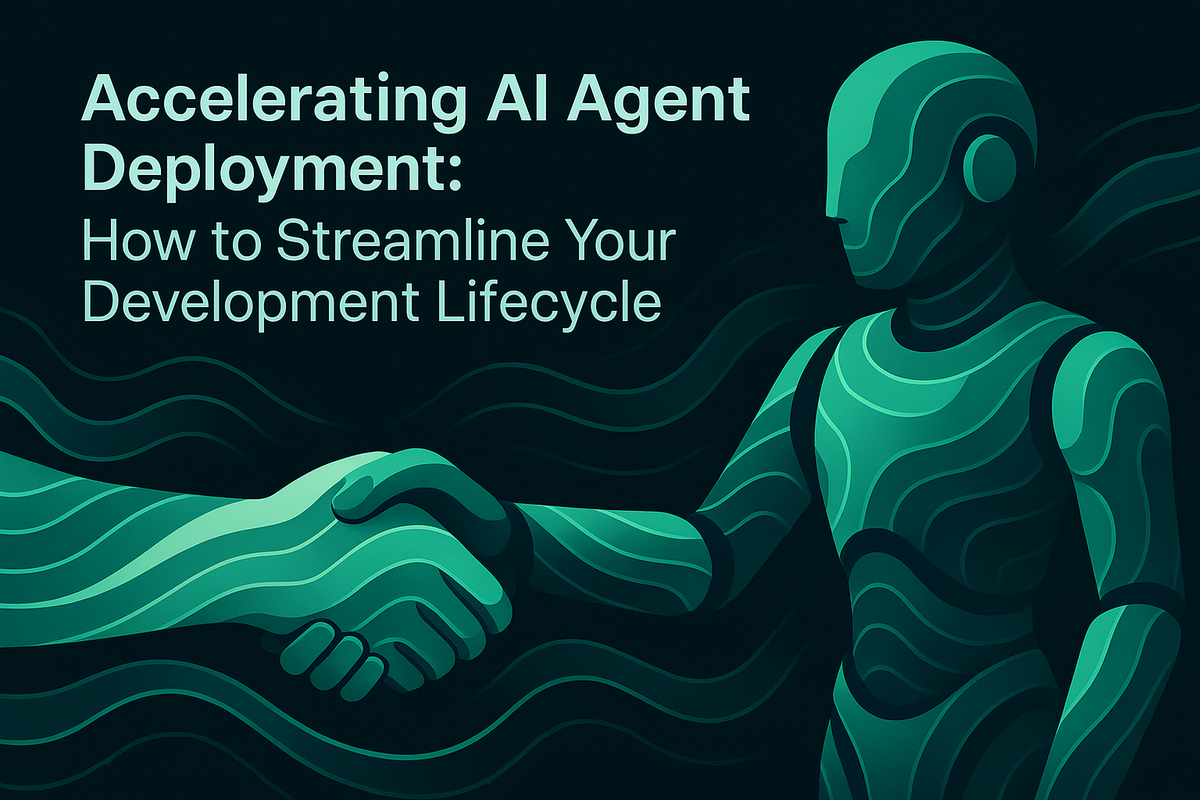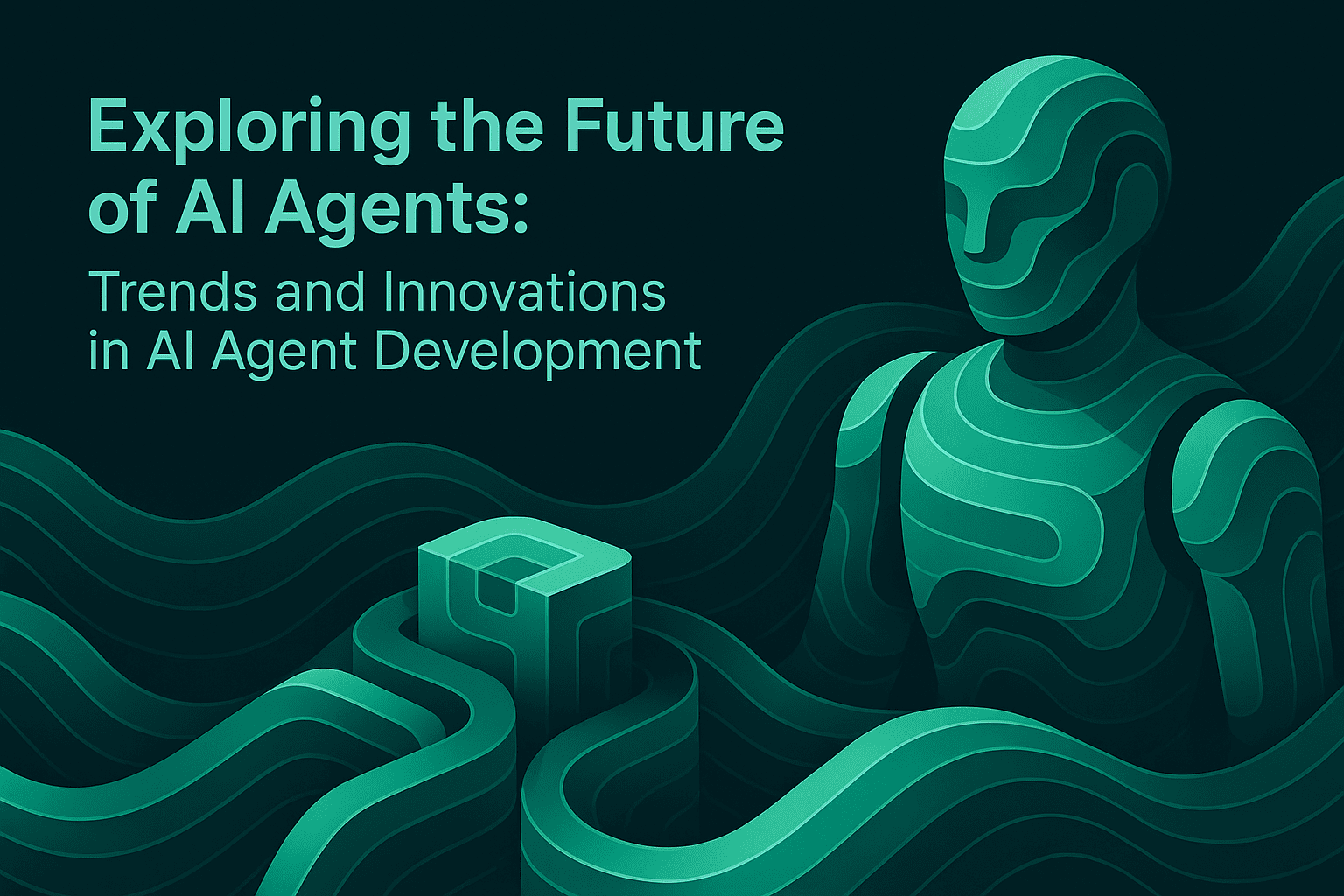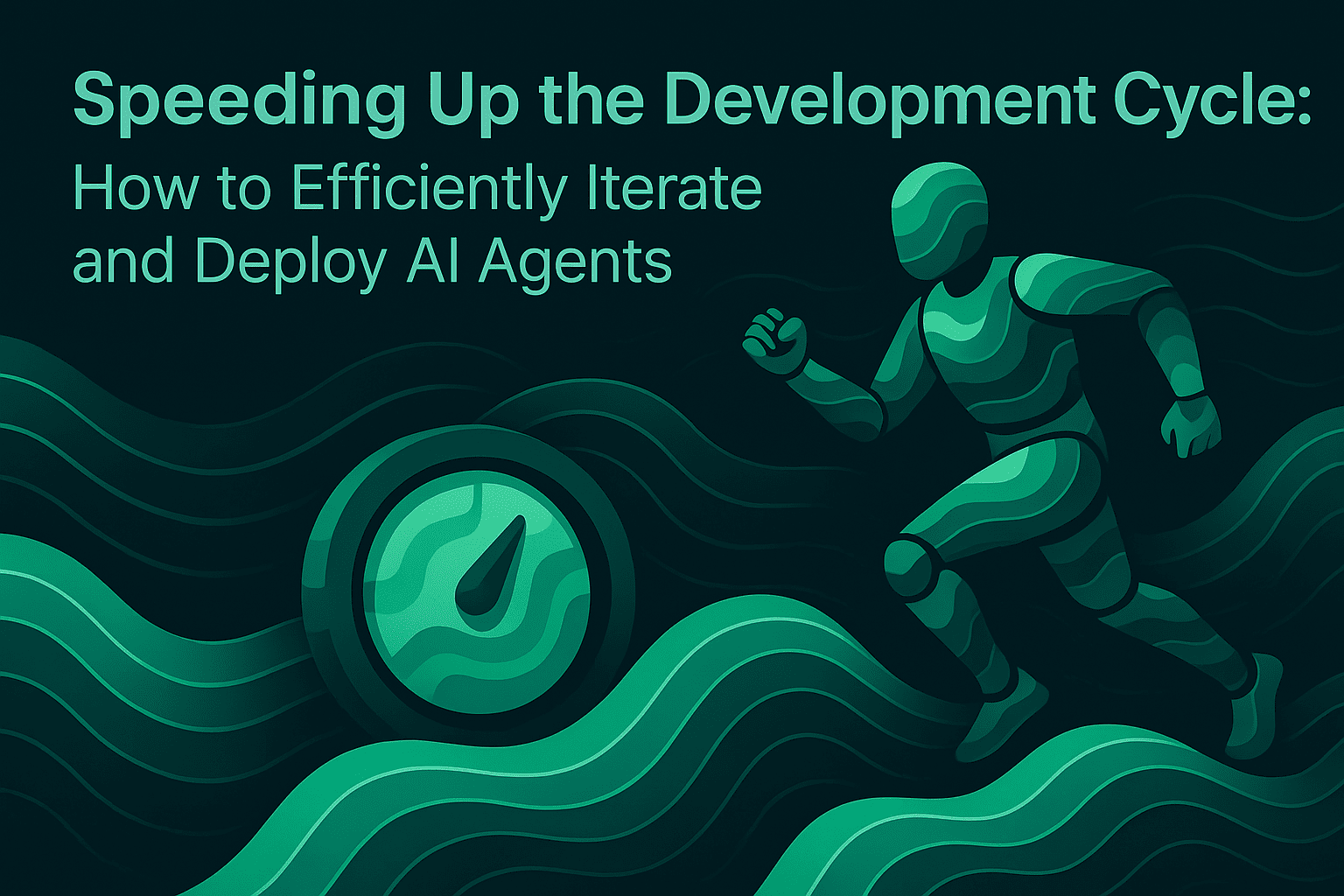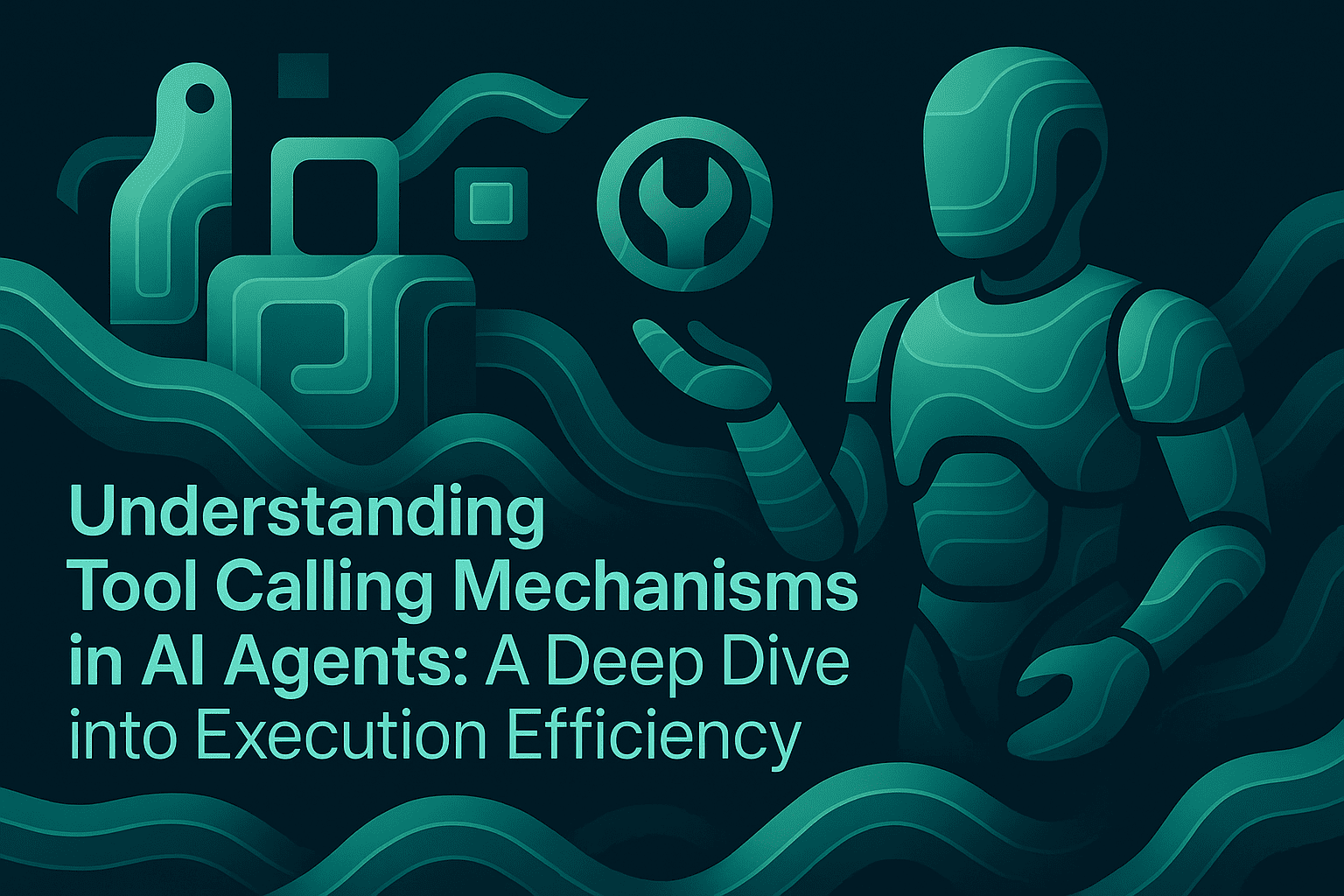Accelerating AI Agent Deployment: How to Streamline Your Development Lifecycle

TL;DR: Organizations adopting AI agents are beginning to see strong returns, though many still face challenges moving pilot projects into full production. Streamlining the AI development lifecycle through MLOps best practices, CI/CD pipelines, and observability platforms reduces deployment time from weeks to hours while ensuring reliable performance.
Introduction: Accelerating AI Agent Deployment in the Modern AI Ecosystem
AI agent deployment is the systematic process of moving machine learning models from development to production. As of 2025, 48% of organizations actively deploy agentic technology, yet 32% of enterprises stall after pilot programs and never reach production. Organizations face mounting pressure to accelerate time-to-market while maintaining quality standards and system reliability.
Streamlining the AI development lifecycle establishes automated workflows, standardized processes, and continuous feedback loops that transform deployment from a months-long bottleneck into a repeatable, efficient operation.
Understanding the AI Agent Development Lifecycle
The AI agent lifecycle encompasses ideation, model design and training, evaluation, deployment, and monitoring. Multiple stakeholders collaborate throughout: data engineers maintain pipelines, ML engineers design algorithms, DevOps teams manage infrastructure, and product managers define success metrics.
Lifecycle inefficiencies compound deployment delays. Manual handoffs create communication gaps. Inconsistent tooling prevents seamless integration. Lack of standardized processes results in repeated work and unpredictable timelines.
The Need for Speed: Why Accelerating AI Agent Deployment Matters
Organizations shipping AI agents faster capture market opportunities before competitors and iterate on feedback continuously. Companies running AI-led operations demonstrate 2.4 times higher productivity. Cost reduction follows acceleration automation eliminates manual processes consuming engineering time. As of 2024, 64.3% of large enterprises adopted MLOps platforms to optimize the machine learning lifecycle.
Balancing speed with reliability requires automated testing, comprehensive monitoring, and compliance frameworks that meet regulatory requirements without slowing releases.
Common Bottlenecks in AI Agent Development and Deployment
Technical bottlenecks emerge from fragmented toolchains and insufficient automation. Operational bottlenecks arise from team misalignment—data scientists specialize in model building but lack deployment expertise. Data bottlenecks constrain lifecycles through inconsistent pipelines and data drift requiring continuous monitoring.
MLOps practices address these challenges by applying DevOps principles to machine learning workflows. By 2025, Gartner projects 70% of enterprises will operationalize AI architectures using MLOps.
Building a Streamlined AI Agent Pipeline
CI/CD pipelines for AI agents automate training, validation, and release stages. Popular tools include Kubeflow for orchestration, MLflow for experiment tracking, and AWS SageMaker, Google Vertex AI, and Azure ML Studio for integrated platforms.
Maxim's experimentation platform enables rapid iteration without code changes, allowing teams to organize and version prompts directly from the UI and deploy with different variables and experimentation strategies. Version control tracks code, data, and model artifacts. Automated rollback reverts deployments when monitoring detects degradation.
Infrastructure and Tooling for Accelerated Deployment
Scalable cloud environments provide computational resources for rapid iteration. Containerization through Docker and Kubernetes enables consistent environments across development and production, eliminating environment-specific issues.
Bifrost, Maxim's AI gateway, unifies access to 12+ providers through a single OpenAI-compatible interface, enabling automatic failover and load balancing. This eliminates vendor lock-in while providing enterprise features like semantic caching and governance controls.
Implementing CI/CD for AI Agents
AI-specific CI/CD extends traditional practices to include data validation, model quality gates, and performance benchmarking. Automated testing validates agent behavior through unit tests, integration tests, and evaluation frameworks assessing accuracy and latency.
Prompt versioning tracks changes over time. Dataset versions ensure reproducibility. Configuration management maintains consistency while enabling experimentation.
Leveraging Synthetic Data and Simulation
Simulation environments generate diverse scenarios that stress-test agent behavior without production traffic. Voice simulation evaluates performance across user personas, revealing issues that would take months to discover.
Teams simulate customer interactions, monitor responses at every step, and re-run simulations to reproduce issues. This identifies optimal strategies before deployment.
Collaboration and Cross-Functional Alignment
Cross-team collaboration affects lifecycle acceleration. Shared platforms provide visibility into the entire lifecycle. Custom dashboards enable non-technical stakeholders to monitor performance without code access.
Agile methodologies adapted for AI projects enable rapid iteration through sprints, standups, and retrospectives that maintain momentum while ensuring alignment with business objectives.
Monitoring, Maintenance, and Continuous Improvement
Production observability frameworks provide real-time visibility. Span-level monitoring captures execution data for debugging. Automated evaluations measure production quality continuously.
Maxim's data engine curates datasets from production logs, enriches data through human feedback, and creates test sets. This accelerates iteration while maintaining quality.
Future of AI Agent Deployment
AutoMLOps represents the next evolution—zero-touch deployment eliminates manual approvals for low-risk changes. By 2028, 15% of routine workplace decisions will be made independently by agentic systems, with 33% of enterprise software including agentic AI capabilities.
Serverless AI eliminates infrastructure management. Adaptive orchestration dynamically routes requests to optimal models. AI-managed pipelines optimize their own performance through meta-learning.
FAQs
What is AI agent deployment? AI agent deployment is the systematic process of transitioning machine learning models from development to production, encompassing model packaging, infrastructure provisioning, integration, validation, and monitoring.
How can you accelerate AI deployment processes? Implement MLOps practices including CI/CD pipelines, automated testing, version control, containerized environments, and comprehensive monitoring. Organizations reduce deployment time by standardizing processes and automating manual steps.
What tools are best for AI lifecycle management? MLflow and Weights & Biases track experiments. Kubeflow orchestrates workflows. AWS SageMaker, Google Vertex AI, and Azure ML provide end-to-end platforms. Maxim AI offers comprehensive simulation, evaluation, and observability.
What are the challenges in deploying AI agents at scale? Organizations face fragmented toolchains, data quality issues, siloed teams, inconsistent processes, monitoring performance degradation, managing drift, and maintaining compliance. 62% of enterprises lack a clear starting point.
What is the difference between AI deployment and MLOps? AI deployment moves a model to production. MLOps encompasses practices, processes, and tools enabling reliable, repeatable deployment throughout the model lifecycle, including experimentation, training, validation, deployment, monitoring, and improvement.
How do CI/CD pipelines help in AI deployment? CI/CD pipelines automate the journey from code changes to production. They validate quality through automated testing, benchmark model performance, manage version control, orchestrate deployment, and enable rapid rollback.
What are best practices for streamlining AI agent development? Establish cross-functional collaboration through shared platforms, implement automated testing and validation, use version control for code and models, deploy comprehensive observability tools, maintain documentation, and iterate rapidly through simulation before production.
Accelerating AI agent deployment requires integrated platforms spanning experimentation, simulation, evaluation, and observability. Maxim AI provides end-to-end capabilities enabling teams to ship agents reliably and 5x faster through unified workflows, flexible evaluators, and comprehensive monitoring.
Get started with Maxim or schedule a demo to accelerate deployment while maintaining quality.


